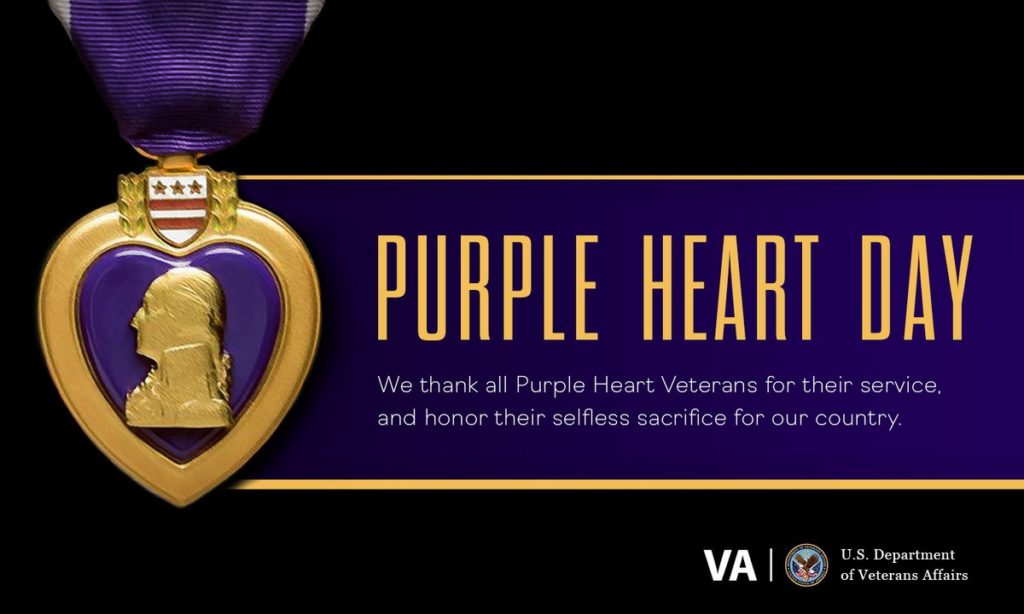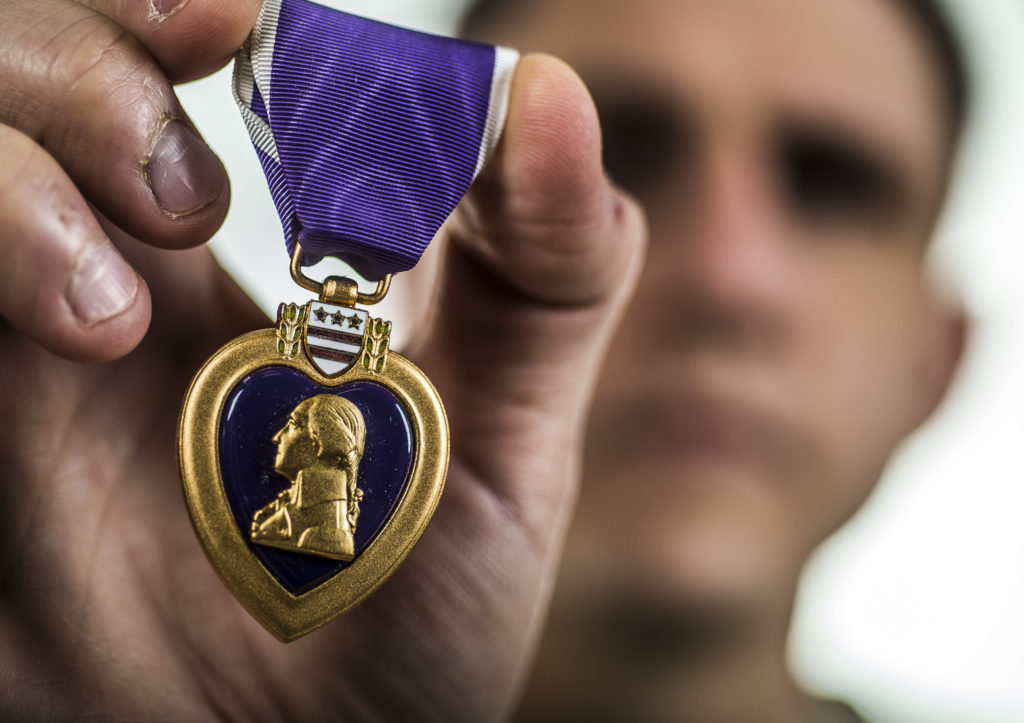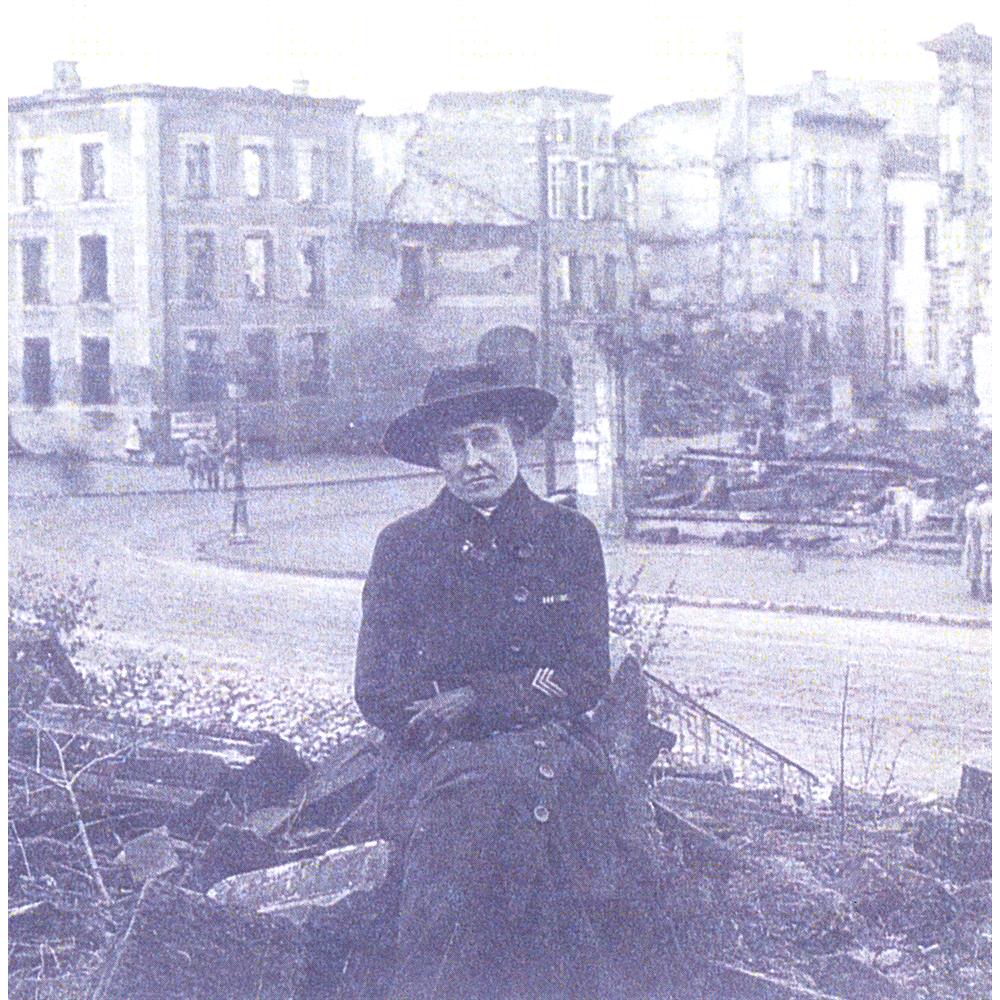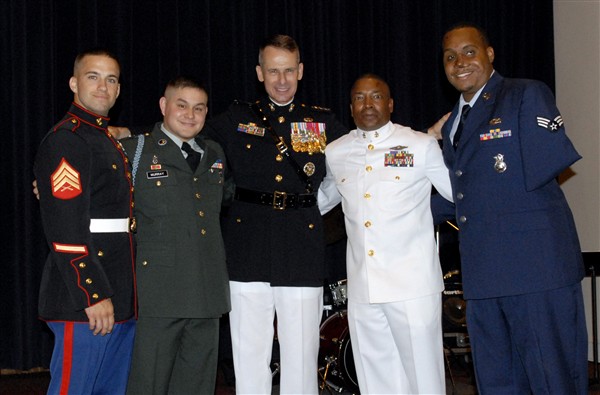
“Courage isn’t a brilliant dash A daring deed in a moment’s flash; It isn’t an instantaneous thing Born of despair with a sudden spring. But it’s something deep in the soul of man That is working always to serve some plan.” – Edgar A. Guest
August 7 was National Purple Heart Day.
Because our nation was still reeling from a horrific weekend that saw 82 men, women and children killed or injured by “domestic” gun fire in our own land, we did no pay as much attention as we should have to a day when Americans traditionally honor and remember those brave men and women who have been wounded or killed by enemy gun fire across wars and eras.
Somewhat belatedly, but nevertheless very respectfully, here is what National Purple Heart Day is all about.
The earliest form of what we now know as the Purple Heart was established by George Washington in 1782 as the “Badge of Military Merit.” It is America’s oldest U.S. military decoration and only a handful of these original badges of honor were awarded.
On 7 August 1782, General Washington announced the new award with these Orders of the Day:
The General ever desirous to cherish a virtuous ambition in his soldiers, as well as to foster and encourage every species of Military Merit, directs that whenever any singularly meritorious action is performed, the author of it shall be permitted to wear…over his left breast, the figure of a heart in purple cloth…Not only instances of unusual gallantry but also of extraordinary fidelity and essential service…shall be met with a due award.
The original color of the badge, designed by George Washington himself, was purple, a color that is believed to represent courage and a color that was the primary color when the “Purple Heart” was officially established.
The Badge of Military Merit issued to Continental Army soldier Sgt. Elijah Churchill (below) is on display at the New Windsor Military Cantonment State Historic Site in New York.

Although never abolished, the award fell into disuse for almost 150 years. In the early 1930s, Army Chief of Staff General Douglas MacArthur was instrumental in renewing interest in a new medal and spearheaded such an effort.
In 1932, on the bicentennial of Washington’s birthday, the Purple Heart was revived by Executive Order of the President of the United States. The Army announced the Purple Heart could also be “awarded to persons who, while serving in the Army of the United States, perform any singularly meritorious act of extraordinary fidelity or essential service.” Wording in General Orders No. 3 also provided for the medal to be awarded to “an individual serving ‘in the Army’ who was wounded in action.”
There were two major differences between the 1932 Purple Heart and today’s Purple Heart:
First, it was an “Army only” decoration, albeit a small number of sailors and Marines were awarded the (Army) Purple Heart for combat wounds suffered while fighting in France.
Second, prior to World War II, the Purple Heart was not awarded posthumously.
The Army, however, discarded the “no posthumous award” rule after the Japanese attack on Pearl Harbor and in April 1942 ruled that the Purple Heart would be awarded to “members of the military service who are killed…or who died as a result of a wound received in action…on or after December 7, 1941.”
Other changes have been made, including:
As other decorations emerged for honoring heroic and meritorious service, award of the Purple Heart became exclusively an award for those wounded or killed in action.
In recognition of those military personnel shedding blood in South Vietnam, the Purple Heart can be awarded to any person wounded or killed “while serving with friendly foreign forces” or “as a result of action by a hostile foreign force.”
The Purple Heart can now be awarded to those killed or wounded as a result of an “international terrorist attack against the United States” and to killed or wounded “outside the territory of the United States” while serving “as part of a peacekeeping mission.”
The law and regulations were amended to authorize the award for wounds received as a result of friendly fire while actively engaging the enemy and to allow prisoners of war to receive the Purple Heart.
The decoration can now also be awarded to servicemen and women who sustain “mild traumatic brain injuries and concussive injuries” in combat.
Finally, qualified members of all military services are now eligible to receive the Purple Heart.

Air Force First Lt. Kevin Summerbell, a C-17 Globemaster III pilot, holds up the Purple Heart he received after being shot in Iraq by enemy combatants.
How many service members have been awarded the Purple Heart?
Estimates vary between 1.5 and 2 million. Interestingly, these estimates include 78,000 who were wounded before the Purple Heart was established in 1932: Veterans of World War I and even the Civil War, the Spanish-American War, the Boxer Rebellion, and more – as long as the applicant was still alive at the time and could prove that he (or she) qualified.
Over one million American service personnel were awarded the Purple Heart during World War II.
More than 100,000 Purple Hearts were awarded to soldiers who were either wounded or killed in action in Korea between 1950 and 1953.
Over 350,000 Purple Hearts were awarded during the Vietnam War.
Over 55,000 Purple Hearts have been awarded to men and women who served in Iraq, Afghanistan and other post-9/11 wars and conflicts.
Who were, or are, some of these brave men and women?
The first soldiers to receive the Badge of Military Merit were Continental Army soldiers William Brown and Elijah Churchill. “Brown was most likely bestowed the honor for his service during the Siege of Yorktown, while Churchill was recognized for his gallantry at a battle near Fort St. George on Long Island.”
Chief Nurse Beatrice Mart MacDonald (below) was the first woman to be awarded the Purple Heart, retroactively, for serious injuries she sustained when German aircraft bombed her hospital in Belgium in World War I.

Chief Nurse MacDonald in a destroyed French town, circa 1917-19. New York State Parks, Recreation and Historic Preservation photo
During World War II, Army Lt. Annie G. Fox became the first woman to receive a Purple Heart in that war for her heroic actions during the Japanese attack on Pearl Harbor.
One of the most famous recipient of the Purple Heart for a pre-1917 combat wound is Calvin Pearl Titus, who, in 1900, while serving in China as a corporal and bugler, led soldiers to climb the thirty-foot-high Tartar Wall, allowing British troops to subsequently breach the Boxers’ stronghold. Titus was also a recipient of the Medal of Honor.
Other famous Purple Heart recipients include: World War II: Douglas MacArthur, George S. Patton, Jr., Audie L. Murphy and John F. Kennedy; Korean War: Lewis Lee “Red” Millett; Vietnam War: John McCain, Norman Schwarzkopf, Jr., Colin I. Powell, Eric K. Shinseki, John Kerry.
Among the heroes who have received multiple Purple Hearts are Charles D. Barger (World War I), Robert T. Frederick (World War II), Albert L. Ireland and William G.”Bill” White (World War II and Korean War), David H. Hackworth and Richard J. Buck (Korean and Vietnam Wars), Curry T. Haynes, Joe Ronnie Hooper, Robert L. Howard and William Waugh, (Vietnam War). All of them were awarded eight or more Purple Hearts.
The youngest recipient of the Purple Heart is Calvin Graham who misstated his age when he joined the Navy at age 12 during World War II and went on to receive the Purple Heart for wounds received during the Naval Battle of Guadalcanal.
Presidents have always honored our fallen and our wounded. During his presidency, Barack Obama visited Walter Reed Army Medical Center 23 times to spend time with Iraq and Afghanistan War wounded. During one of those visits he awarded 12 Purple Hearts.
In 2007, then Chairman of the Joint Chiefs of Staff, Marine Gen. Peter Pace, honored four Iraq War Purple Heart recipients — one from each service — at the historic Marine Barracks in Washington, D.C. The recipients were: Army Cpl. Mathew Murray, Marine Sgt. Nicholas Wahle, Navy Senior Chief David L. Hall and Air Force Senior Airman Michael Fletcher (below). They are four of the more than 55,000 men and women who have been awarded the Purple Heart in the post 9-11 wars and conflicts.

With Marine Gen. Peter Pace, from left, are Marine Sgt. Nicholas Wahle, Army Cpl. Mathew Murray, Navy Senior Chief David L. Hall and Air Force Senior Airman Michael Fletcher. Defense Dept. Photo by Air Force Staff Sgt. D. Myles Cullen.
General Pace said then, “Another 2.4 million Americans just like them serve our nation tonight so we can…live the lives we want to live, enjoy our families, pray where we want to pray – or not pray – and just live our lives as Americans.”
While, fortunately, tonight not as many of our service men and women are in as much harm’s way as they were 12 years ago, they are still earning their Purple Hearts in many places around the world, a “unique, egalitarian award in what is usually thought of as a nondemocratic, hierarchical military organization, since every man or woman in uniform who sheds blood or receives a qualifying injury while defending the nation receives the Purple Heart regardless of position, rank, status, or popularity.”
Please watch the video below.
Sources:
The Purple Heart – The Story of America’s Oldest Military Decoration and Some Soldier Recipients
8 Things You Need to Know About the Purple Heart Medal
National Purple Heart Day 2019
















